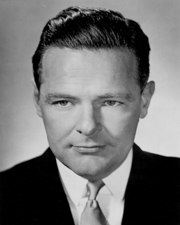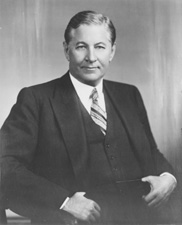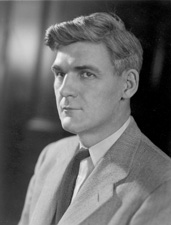| |||||||||||||||||
| |||||||||||||||||
| |||||||||||||||||
| Elections in Utah |
|---|
 |
The 1936 Utah gubernatorial election was held on November 3, 1936. Incumbent Democrat Henry H. Blood defeated Republican nominee Ray E. Dillman with 64.59% of the vote.
| |||||||||||||||||
| |||||||||||||||||
| |||||||||||||||||
| Elections in Utah |
|---|
 |
The 1936 Utah gubernatorial election was held on November 3, 1936. Incumbent Democrat Henry H. Blood defeated Republican nominee Ray E. Dillman with 64.59% of the vote.
| Party | Candidate | Votes | % | ±% | |
|---|---|---|---|---|---|
| Democratic | Henry H. Blood (incumbent) | 109,656 | 64.59% | ||
| Republican | Ray E. Dillman | 60,118 | 35.41% | ||
| Majority | 49,538 | ||||
| Turnout | |||||
| Democratic hold | Swing | ||||

The 1936 United States presidential election was the 38th quadrennial presidential election, held on Tuesday, November 3, 1936. In the midst of the Great Depression, incumbent Democratic President Franklin D. Roosevelt defeated Republican Governor Alf Landon of Kansas. Roosevelt won the highest share of the popular and electoral vote since the largely uncontested 1820 election. The sweeping victory consolidated the New Deal Coalition in control of the Fifth Party System.
John Cox may refer to:

The 1948 United States Senate elections were elections which coincided with the election of Democratic President Harry S. Truman for a full term. Truman had campaigned against an "obstructionist" Congress that had blocked many of his initiatives, and in addition the U.S. economy recovered from the postwar recession of 1946–47 by election day. Thus Truman was rewarded with a Democratic gain of nine seats in the Senate, enough to give them control of the chamber.

The United States Senate elections of 1942 were held November 3, 1942, midway through Franklin D. Roosevelt's third term as President.
The Massachusetts Republican Party (MassGOP) is the Massachusetts branch of the U.S. Republican Party.

Henry Hooper Blood was an American businessman and the seventh governor of Utah.

The Massachusetts United States Senate election of 1936 coincided with the landslide re-election of Democratic incumbent U.S. President Franklin D. Roosevelt over Republican candidate Alf Landon.

The 1936 United States House of Representatives elections in South Carolina were held on November 2, 1936, to select six Representatives for two-year terms from the state of South Carolina. All five incumbents who ran were re-elected and the open seat in the 4th congressional district was retained by the Democrats. The composition of the state delegation thus remained solely Democratic.
The Wisconsin Progressive Party (1934–1946) was a political party that briefly held a dominant role in Wisconsin politics.

The United States Senate election of 1942 in Massachusetts was held on November 3, 1942, with Republican incumbent Henry Cabot Lodge, Jr. defeating his challengers.

The 1930 United States Senate election in Montana took place on November 3, 1936. Incumbent United States Senator James E. Murray, who was first elected to the Senate in a special election in 1934, ran for re-election. He narrowly emerged from a competitive and close Democratic primary, wherein he was challenged by United States Congressman Joseph P. Monaghan, who represented Montana's 1st congressional district. In the general election, Murray was opposed by Thomas O. Larson, a State Senator and the Republican nominee, and Monaghan, who, after losing the primary, ran as an independent candidate. Murray ended up winning a second term, and his first full term, in a landslide, defeating both of his opponents by a comfortable margin.

The 1936 Montana gubernatorial election took place on November 3, 1936. Incumbent Governor of Montana Elmer Holt, who became governor in 1935 upon the death of Frank Henry Cooney, ran for re-election. He was challenged in the Democratic primary by a number of challengers, and was narrowly defeated for renomination by United States Congressman Roy E. Ayers of Montana's 2nd congressional district. Ayers advanced to the general election, where he faced Frank A. Hazelbaker, the former Lieutenant Governor of Montana and the Republican nominee. Following a close election, Ayers narrowly defeated Hazelbaker to win what would be his first and only term as governor.

The 1942 United States Senate election in Minnesota took place on November 3, 1942. Incumbent Republican Joseph H. Ball, who had been temporarily appointed by Governor Harold Stassen in 1940 to fill the seat of the deceased Farmer–Labor U.S. Senator Ernest Lundeen, defeated Farmer–Labor former U.S. Senator and former Governor Elmer Benson, independent candidate Martin A. Nelson, and Democratic nominee Ed Murphy, to win election to the full six-year term beginning in January 1943. A special election held on the same date elected Republican nominee Arthur E. Nelson to serve the remainder of Lundeen's unexpired term.

The 1940 United States Senate election in Minnesota took place on November 5, 1940. Incumbent U.S. Senator Henrik Shipstead defected to the Republican Party of Minnesota from the Farmer–Labor Party of Minnesota, and defeated former Governor Elmer Benson of the Farmer–Labor Party and John E. Regan of the Minnesota Democratic Party to win a fourth term.

Gubernatorial elections were held in Massachusetts on November 8, 1938.

The 1936 Colorado gubernatorial election was held on November 3, 1936. Democratic nominee Teller Ammons defeated Republican nominee Charles M. Armstrong with 54.57% of the vote.

The 1932 Utah gubernatorial election was held on November 8, 1932. Democratic nominee Henry H. Blood defeated Republican nominee William W. Seegmiller with 56.39% of the vote.

The 1936 Iowa State Senate elections took place as part of the biennial 1936 United States elections. Iowa voters elected state senators in 32 of the state senate's 50 districts. State senators serve four-year terms in the Iowa State Senate.

Elections were held in Illinois on Tuesday, November 5, 1940.

Elections were held in Illinois on Tuesday, November 3, 1936.